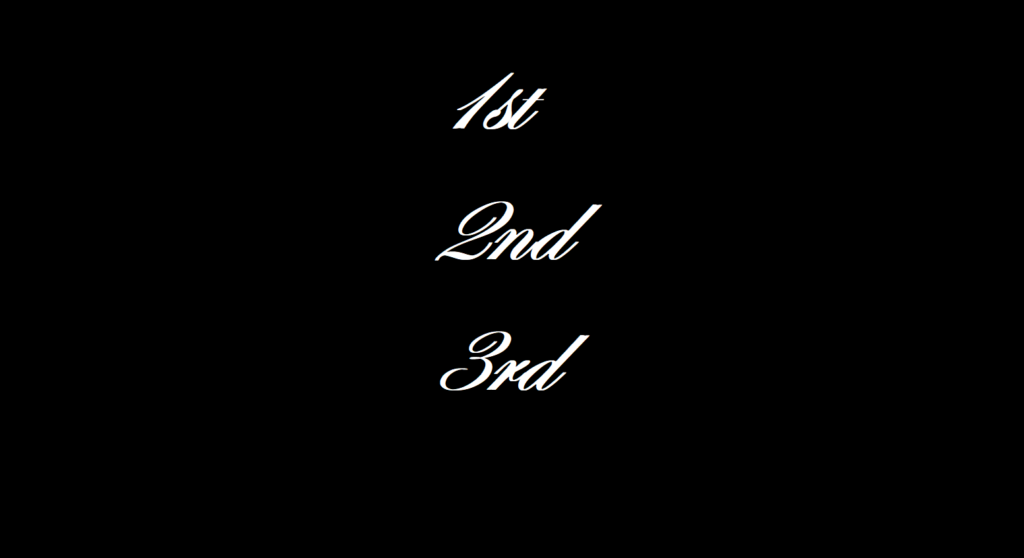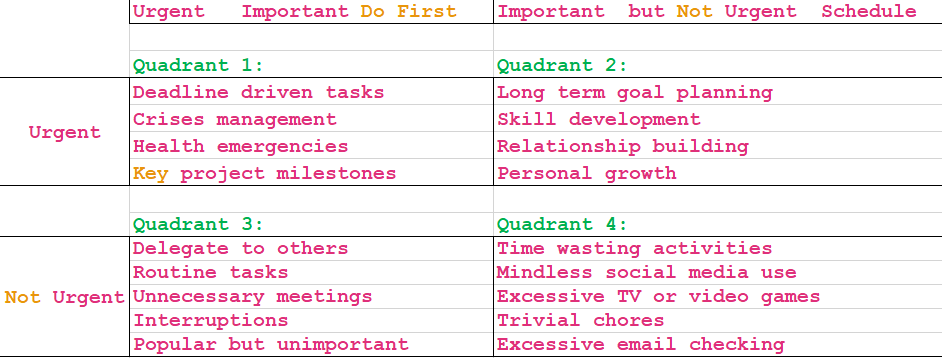Time is our finite resource, and for busy professionals, effective time management is the key to achieving success in both their personal and professional lives. In this article we show “Effective Time Management Techniques for Busy Professionals.
In a world filled with constant demands, distractions, and deadlines, mastering time management is not just a valuable skill; it’s a necessity.
This article explores various time management skills, techniques, strategies, and the many benefits they offer to busy professionals.
Time Management Skills
In this paragraph you can read more about the skills what you need to have and develop in order to be effective in time management, your professional and private life.
Prioritization
The cornerstone of effective time management is prioritizing tasks.
Busy professionals need to identify the most important and urgent tasks, ensuring they receive the attention they deserve.

Goal Setting
Clearly defined goals provide direction and purpose.
Setting short-term and long-term goals helps professionals allocate time to activities that align with their objectives.
Task Batching
Grouping similar tasks together can save time and mental energy.
By batching similar activities, you can streamline your workflow and reduce the cognitive load of constantly switching between different tasks.
Example: reading and writing answers to e-mails one after another sometimes more effective than reading an e-mail then reading a document, then writing an answer, except if we need to prioritize as in that case we need to solve the e-mail’s task first, which might involve reading a document.
Multitasking
Multitasking not effective, although a lot of people think you need to multitask. However, recent studies show multitasking not effective at all.
“Based on over a half-century of cognitive science and more recent studies on multitasking, we know that multitaskers do less and miss information. It takes time (an average of 15 minutes) to re-orient to a primary task after a distraction such as an email. Efficiency can drop by as much as 40%. Long-term memory suffers and creativity — a skill associated with keeping in mind multiple, less common, associations — is reduced.” according to Paul Atchley, Ph.D. who is an associate professor of Cognitive Psychology at the University of Kansas (Harvard Business Review).
Delegation
Busy professionals should recognize when to delegate tasks to others.

Trusting a team or outsourcing certain responsibilities frees up your time for more strategic and high-impact activities.
Time Blocking
It involves allocating specific blocks of time to work on particular tasks.
This method helps to
- create a structured schedule and
- minimizes interruptions.
The 4 Best Time Management Techniques
1. The Pomodoro Technique
This technique involves working for a set period followed by a break. After completing four cycles, take a longer break. It enhances focus and prevents burnout.
The Pomodoro Technique is a time management method developed by Francesco Cirillo in the late 1980s. It is a simple yet effective approach that helps individuals improve their
- focus,
- productivity, and
- time management skills.
(The technique is named after the Italian word for “tomato,” as Cirillo initially used a tomato-shaped kitchen timer as a student.)
How the Pomodoro Technique Works?
It involves
- breaking work into short, focused intervals (usually 25 minutes) called “Pomodoros,”
- followed by a 5-minute break.
- after completing four Pomodoros, you take a longer break of 15-30 minutes. During each Pomodoro, you work on a single task, eliminating distractions and maintaining full concentration.
The key principles of the Pomodoro Technique
- Focus: The method encourages deep, uninterrupted work during each Pomodoro.
- Time Tracking: The technique promotes tracking how much time you spend on tasks, helping you become more aware of your work habits.
- Regular Breaks: Frequent short breaks prevent burnout and maintain mental freshness.
Who Uses the Pomodoro Technique?
It is popular among a wide range of professionals, students, and individuals seeking to boost their productivity and time management skills.
It is particularly useful for those who struggle with procrastination, difficulty maintaining focus, or managing time effectively.
- Students: Many students use the Pomodoro Technique to improve study habits and increase their concentration when preparing for exams or writing papers.
- Professionals: Office workers, project managers, and professionals from various industries use the Pomodoro Technique to enhance their productivity by breaking tasks into manageable, focused intervals.
- Freelancers and Entrepreneurs: Self-employed individuals often use this method to structure their workdays and stay on track with their projects.
- Creatives: Writers, designers, and artists find it helpful for overcoming creative blocks and maintaining inspiration.
- Health and Fitness Enthusiasts: Some individuals use the technique for workouts, with focused exercise sessions followed by short breaks.
- Famous professionals:
- Elon Musk: the CEO of Tesla and SpaceX has been known to use time-blocking methods similar to the Pomodoro Technique to manage his demanding schedule and prioritize tasks effectively.
- Tim Ferriss: the author and entrepreneur, known for his book “The 4-Hour Workweek,” has mentioned using variations of the Pomodoro Technique to maintain high productivity.
- Chris Winfield: the productivity expert and entrepreneur who has spoken about his successful use of the Pomodoro Technique to manage his workload and accomplish more in less time.
2. The Eisenhower Matrix
The Eisenhower Matrix, also known as the Urgent-Important Matrix, is a powerful time management and productivity tool. This method categorizes tasks into four quadrants based on importance and urgency. It guides professionals to prioritize tasks effectively and minimize time wasted on unimportant activities.
It was popularized by Stephen Covey in his book “The 7 Habits of Highly Effective People” and is named after Dwight D. Eisenhower, the 34th President of the United States, who was known for his time management skills. The matrix is a simple yet effective way to prioritize tasks and make decisions about what to focus on in order to maximize productivity and efficiency.
The Eisenhower Matrix consists of four quadrants
- Urgent and Important (Do First):
- Tasks in this quadrant are both time-sensitive and crucial. These tasks require immediate attention because they have a significant impact on your goals or well-being. They are the most critical tasks that should be tackled first.
- Important, but Not Urgent (Schedule):
- Tasks in this quadrant are essential for your long-term goals but don’t have an immediate deadline. These are activities that should be scheduled and planned for to ensure they are addressed and not neglected. This quadrant is where you invest your time in activities that prevent crises and advance your long-term goals.
- Urgent, but Not Important (Delegate):
- Tasks in this quadrant are urgent but do not contribute directly to your long-term goals or your well-being. These tasks often can be delegated to others, freeing up your time for more important activities. Delegation is a key strategy for managing tasks in this quadrant.
- Not Urgent and Not Important (Eliminate):
- Tasks in this quadrant are neither urgent nor important. These are time-wasting activities that should be minimized or eliminated from your schedule. They provide little value and can consume a significant amount of your time if not managed properly.

How to use the Eisenhower Matrix?
Eisenhower Matrix is an effective Time Management technique and here you can read how to use the matrix:
- Identify Tasks: listing all the tasks and responsibilities you need to address.
- Categorize Tasks: place each task into one of the four quadrants based on its urgency and importance.
- Prioritize: focus on tasks in Quadrant 1 (Urgent & Important) first. Once these are under control, allocate time to Quadrant 2 tasks to work on your long-term goals.
- Delegate: whenever possible, delegate tasks in Quadrant 3. Trust your team or seek assistance to handle these tasks more efficiently.
- Eliminate: review the tasks in Quadrant 4, and either minimize or eliminate them from your daily routine.
3. Getting Things Done (GTD)
GTD is a comprehensive Time Management system that involves
- capturing,
- clarifying,
- organizing,
- reflecting, and
- engaging with tasks.
It helps professionals manage their tasks and commitments efficiently.
4. Time Tracking Apps
There are numerous time tracking apps available that help professionals monitor and analyze how they spend their time. This data can be used to identify areas for improvement. Everyone can find out which is the best for themselves just as how they use fitness tracking apps as well.
In the 2nd part of the article I will write more about the Strategies and Benefits of the effective Time Management Techniques.
